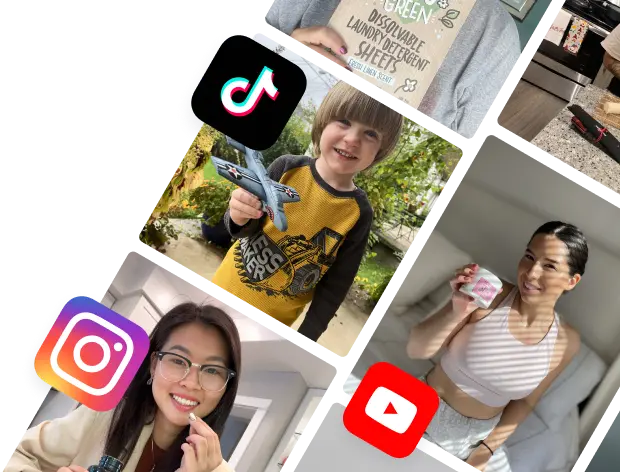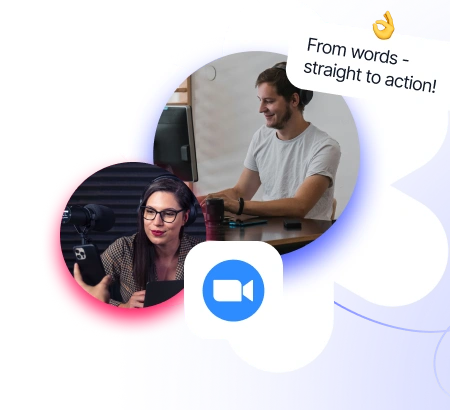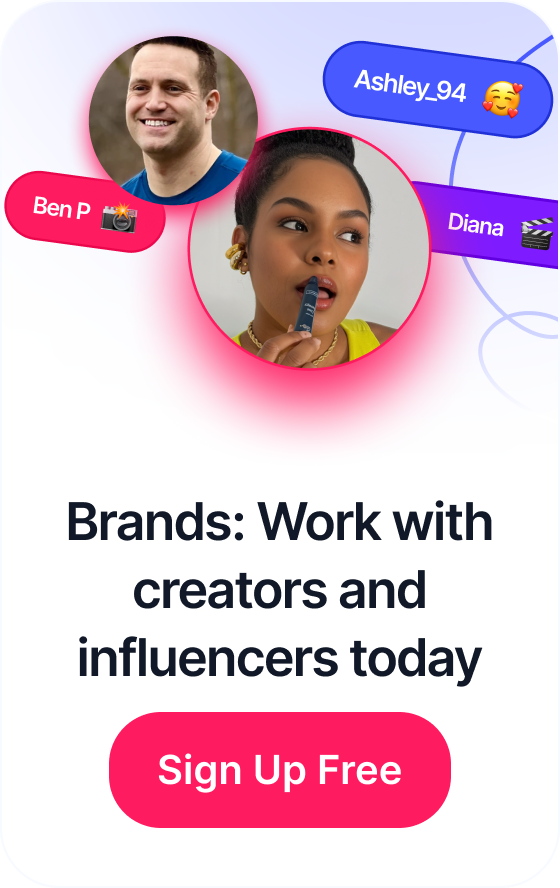 12 Fresh Instagram Reel Ideas That Actually Work (2025)
12 Fresh Instagram Reel Ideas That Actually Work (2025)
If you want to boost your social media engagement, you have to stop thinking like an advertiser and start acting like a community builder. It’s a fundamental shift. Your content needs to deliver real value, spark actual conversations, and get to the heart of why your audience shows up in the first place.
Forget chasing hollow metrics. It's time to build authentic relationships.
Table of Contents
Rethinking Your Social Media Engagement Strategy
The old playbook is officially broken. Just racking up followers and spamming them with promotional posts doesn't cut it anymore. Today's social media users are sharp—they can smell an ad a mile away and what they really want is connection, not just a constant stream of content.
If your engagement numbers have flatlined, that's a huge red flag. It means your strategy needs to evolve from a one-way megaphone into a genuine, two-way dialogue.
This whole process starts when you grasp the sheer scale of these platforms. As of early 2025, a mind-boggling 63.9% of the global population—that's 5.24 billion people—are active on social media. They're spending an average of 2 hours and 21 minutes scrolling every single day. The opportunity is massive, but you're also competing with an incredible amount of noise.
From Vanity Metrics to Valuable Connections
For too long, brands were obsessed with "vanity metrics" like follower counts and likes. Sure, these numbers look nice on a report, but they rarely translate into a healthy community or, more importantly, actual business results. A million followers means nothing if no one is commenting, sharing, or truly connecting with your brand.
A modern, effective strategy focuses on metrics that signal a real connection:
- Comments and Conversations: This is gold. It shows your content was interesting enough to make someone stop and type out a response.
- Shares and Saves: This is the ultimate compliment. Your audience found your content so valuable they either wanted to show it to their friends or keep it for themselves.
- Direct Messages (DMs): When someone slides into your DMs, it’s a powerful signal of trust. They feel comfortable enough to start a private, one-on-one conversation.
A truly effective engagement strategy isn't about how many people you reach; it's about how many people you move. The goal is to build a community where your followers feel seen, heard, and valued.
Adopting a Community-First Mindset
Putting your community first means every single piece of content you create should serve them in some way. Before you ever hit that "publish" button, ask yourself a simple question: Does this entertain, educate, or inspire my audience?
If the answer is no, it's probably just more digital clutter.
This chart breaks down the average engagement rates across the major platforms, giving you a clue as to where user interactions are naturally the strongest.

As you can see, some platforms are just built for higher interaction. This makes it critical to tailor your content to fit the specific culture of each one. For instance, a visual-first platform like Instagram is all about stunning images and snappy videos, while a platform that's more discussion-based might see better engagement from thought-provoking questions.
To dig deeper into different growth strategies, check out Rebelgrowth's blog. This community-focused perspective is the bedrock for all the practical tactics we're about to get into.
To better understand this strategic shift, let's compare the old and new ways of thinking about engagement.
Core Pillars of Modern Social Media Engagement
This table breaks down the fundamental principles for driving real interaction, moving away from outdated tactics toward strategies that actually work today.
| Engagement Pillar | Old Approach (Less Effective) | Modern Approach (More Effective) |
|---|---|---|
| Content Focus | Broadcasting promotional messages | Providing value (entertaining, educating, inspiring) |
| Primary Goal | Gaining followers and likes | Building a loyal and active community |
| Key Metrics | Follower count, impressions, likes | Comments, shares, saves, DMs, click-throughs |
| Communication Style | One-way megaphone (brand to audience) | Two-way dialogue (conversations with the audience) |
| Audience View | A passive group of consumers | Active participants and co-creators |
Switching your mindset to align with the "Modern Approach" column is the single most important change you can make. It's not about doing more; it's about doing what matters.
Know Your Audience, Know Your Platform

Let's be blunt: posting content without knowing who you're talking to is like shouting into a dark room. You might make some noise, but you won't connect with anyone. If you genuinely want to boost your social media engagement, you have to get a crystal-clear picture of your audience and the unwritten rules of the platforms where they spend their time.
This goes way beyond basic demographics. We need to get inside their heads to figure out what makes them tick—their pain points, what they're passionate about, and what makes them stop scrolling. The goal is to move from a vague "target customer" to a detailed audience persona that feels like a real person. This isn't just fluffy marketing work; it's the bedrock of any engagement strategy that actually gets results.
Go Deeper Than Demographics
Sure, knowing age and location is a start, but it's just scratching the surface. That data doesn't tell you why people do what they do online. To build a real connection, you have to dig into their psychographics. What are their biggest aspirations? What problems keep them up at night?
Here’s how you can start uncovering these game-changing insights:
- Become a data detective: Every social media platform has an analytics dashboard packed with gold. Look at your best-performing posts. Are they funny, educational, or behind-the-scenes? Your own data is the most direct feedback you'll ever get.
- Listen in on the conversation: Use social listening tools to track what people are saying about your brand, your competitors, and the industry as a whole. What questions pop up again and again? These conversations are a treasure trove of content ideas.
- Read the comments: Your comments section is a live focus group. Pay close attention to the slang, the jokes, and the questions your followers are using. This is how you learn to speak their language, literally.
Once you’ve gathered this intel, bring it to life in 2-3 detailed personas. Give them names, jobs, and challenges. Instead of a generic "moms aged 30-40," think "Eco-conscious Emma," a 35-year-old project manager hunting for sustainable, time-saving products for her family. Suddenly, creating content for Emma becomes a whole lot easier.
Respect the Vibe of Each Platform
Knowing who you're talking to is only half the battle. You also have to understand the unique culture of each social platform. Blasting the same exact post across all your channels is a rookie mistake that guarantees you'll be ignored. Every platform has its own etiquette and expectations. You need to show up like a local, not a tourist.
A critical mistake I see brands make all the time is treating social media like a giant megaphone. The polished, professional tone of a LinkedIn article will feel jarring on TikTok, and a trending TikTok dance will fall completely flat on LinkedIn.
Think about the distinct personality of each major platform. Facebook, for example, is still a giant for community building and shopping. It has a staggering 3.065 billion monthly active users, with 25-34 year-olds making up the largest chunk at 31.1% of its base. It also leads the pack in social commerce, with 39% of consumers buying products directly on the platform. This tells you that content aimed at that age group, especially in places like Facebook Groups, can drive massive interaction and sales. For a deeper dive into these numbers, Sprout Social offers some great demographic reports.
How to Adapt Your Message Without Reinventing the Wheel
Adapting your content doesn’t mean creating brand-new campaigns for every single channel. It's more about "repackaging" your core message to feel native to each environment.
Here’s a practical example. Let's say a brand is launching a new productivity app. Here’s how they could tailor their message:
| Platform | Core Message Adaptation | Content Format |
|---|---|---|
| Focus on how the app boosts team efficiency and professional growth. | A detailed article or a carousel post highlighting key features with a professional tone. | |
| Showcase the app's beautiful interface and how it helps users achieve a better work-life balance. | A visually appealing Reel showing a "day in the life" or an aesthetic carousel of user testimonials. | |
| TikTok | Create a short, engaging video showing a specific "hack" or a relatable "before and after" scenario. | A quick, trend-driven video using popular audio that demonstrates the app’s main benefit in under 15 seconds. |
| Facebook Group | Start a discussion asking community members about their biggest productivity struggles. | An open-ended question post to spark conversation, followed by sharing how the app solves those specific problems. |
When you master both your audience and the culture of each platform, you stop being just another brand shouting for attention. You become a valuable, relevant voice that people actually want to listen to and engage with. This is the first real step toward building a community that not only follows you but champions your brand.
Right, let's get past the fluff. Creating content that stops the scroll is one thing, but actually getting someone to type out a comment, hit share, or tag a friend? That's a whole different ballgame. It demands a much deeper strategy.
Generic, soulless posts just won't cut it. You need to craft content that pulls your audience into a real conversation. This means your posts should feel less like a broadcast from a megaphone and more like the start of a fascinating discussion you'd have with a friend. It all comes down to understanding which formats naturally encourage a response and learning how to weave stories that connect on a human level.
Content Formats That Demand Interaction
Let's be honest, some types of content are practically built to generate engagement because they directly ask for it. They make it incredibly easy and even fun for your audience to jump in. Instead of just crossing your fingers and hoping for comments, you're actively inviting them.
Try mixing these proven formats into your content calendar:
- Interactive Polls and "This or That" Posts: These are the definition of low-effort, high-reward. A simple "Coffee or Tea?" or "Workout at Home or in the Gym?" poll on Instagram Stories gives your followers an instant way to throw in their two cents. It’s just one click, but it makes them feel heard.
- Educational Carousels: I've seen this work time and time again. A well-designed carousel that solves a real problem for your audience is a magnet for saves and shares. Break down a complex topic into 5-7 digestible slides. For example, a financial advisor could create a carousel on "5 Common Budgeting Mistakes to Avoid." It’s pure value.
- Open-Ended Questions: This is key. Don't just make statements; ask questions. Instead of posting, "Here's our new product," try something like, "What's the one feature you wish a product like this had?" This simple shift turns passive viewers into active consultants for your brand.
When you deliberately use these formats, you're giving your audience clear, simple ways to interact. That's a huge signal to the algorithms that your content is valuable and worth showing to more people.
The Power of Vulnerability and Storytelling
Facts tell, but stories sell. More importantly, stories connect. People don't build relationships with logos; they build them with the people and the real narratives behind the brand. Sharing your journey—the good, the bad, and the ugly—makes your brand feel human and relatable.
Being vulnerable doesn't mean airing all your dirty laundry. It just means being authentic. Did you have a product launch that didn't go as planned? Share what you learned from it. Are you a solo founder feeling the pressure? A post sharing that genuine experience can generate far more empathy and connection than another perfectly polished product shot.
I once saw a small e-commerce brand post about a major shipping delay they were experiencing. Instead of trying to hide the problem, they explained the situation with total honesty, laid out their action plan, and kept their community in the loop. The comment section wasn't filled with anger. It was flooded with support and understanding. That's the power of authentic storytelling.
This kind of raw honesty builds trust, and trust is the bedrock of any strong community. People engage with brands they feel a real connection to.
Build a Balanced Content Calendar
Your feed should never, ever feel like a non-stop billboard. If every single post is a direct sales pitch, you'll watch your engagement numbers dive off a cliff. A truly successful content strategy balances different types of value to keep your audience hooked and coming back for more.
I like to think of content in four key pillars:
- Educate (40%): Teach your audience something genuinely useful. This could be how-to guides, industry insights, or tips and tricks related to your niche. This is how you position yourself as an expert.
- Entertain (30%): Make them smile or laugh. Think memes, funny Reels, or behind-the-scenes glimpses of your team's personality. This kind of content is wildly shareable and makes your brand so much more likable.
- Inspire (20%): Share success stories, amazing user-generated content, or motivational quotes that really align with your brand's core values. This is how you forge that crucial emotional bond.
- Promote (10%): Finally, this is where you talk about your products or services. Because you've spent the other 90% of the time providing real value, your audience will be far more receptive to your promotional content when it pops up.
This balanced approach ensures your feed becomes a go-to resource, not just another sales channel. By mixing education, entertainment, and inspiration with just the right amount of promotion, you create a dynamic experience that encourages followers to stick around, participate, and eventually become your most loyal customers.
For brands looking to really scale this approach with authentic voices, a platform like JoinBrands is perfect for connecting you with creators who are masters at producing exactly this kind of engaging, story-driven content.
If you really want to crank up your social media engagement, you have to get one thing straight: your audience trusts their peers way more than they trust your slick, polished ads. It's just human nature. Moving your focus from brand-perfect content to stuff made by your actual community isn't just a "nice to have" anymore—it’s the core of any modern engagement playbook.

Authenticity is the real currency on social media. Nothing builds it faster than content from real customers and creators people already follow and respect. This is where User-Generated Content (UGC) and creator partnerships become your secret weapons, giving you the social proof that stops the scroll and turns passive viewers into a real community.
How to Get Your Community Creating for You
User-Generated Content is gold. We're talking photos, videos, reviews, unboxings—anything your audience creates that features your brand. It’s today's word-of-mouth marketing, and it works like a charm. The trick isn't just waiting for it to happen; you have to actively spark it.
You’ve got to give people a reason to hit "post." Here are a few ways I’ve seen work time and time again:
- Launch a Branded Hashtag Challenge: Don't just slap a hashtag on a post and hope for the best. Build a real campaign around it. For example, a fitness apparel brand could kick off a
#MyBrand30DayChallenge, encouraging people to post their workout progress. The magic ingredient? A prize they actually want or a chance to be featured on your main page. - Shine a Spotlight on Customer Stories: Go out and find your customers' posts, then celebrate them. When you share a customer’s photo (always ask for permission first!) and tag them, you're doing more than just filling your content calendar. You're telling your entire audience, "We see you, we value you," which makes everyone else want a piece of that recognition.
- Create "Instagrammable" Moments: If you've got a physical store or a product with killer packaging, think about how to make it irresistible to share. It could be as simple as a neon sign with a witty quote in your shop or packaging so beautiful people can't help but film an unboxing video.
When you make it fun and rewarding, your audience flips from being passive consumers to active cheerleaders for your brand.
The brands that win today don't just sell things; they build movements. They create a vibe where customers feel like they're part of an exclusive club, and sharing UGC becomes a badge of honor.
This approach floods your feed with authentic content and skyrockets your social proof, making your brand feel so much more relatable and trustworthy.
Finding the Right Creators for Your Brand
Once you’ve got organic UGC flowing, the next step is to pour some fuel on the fire with strategic creator partnerships. But here’s the deal: finding the right partners is everything. This isn't about chasing the biggest follower counts. It's about finding creators whose audience and personal vibe are a perfect match for your brand.
Think of it like casting for a movie—you need someone who just gets the role. A creator who is a genuine fan of what you do will create content that feels real and exciting, not like a clunky, forced ad read. That’s the authenticity that connects with their audience and drives real, meaningful engagement.
Managing Partnerships for Maximum Impact
After you've found your ideal creators, aim for a long-term relationship, not just a one-and-done post. A consistent flow of high-quality, creator-driven content is infinitely more valuable than a single, lonely sponsored post that disappears in a day.
To keep all the moving parts straight, a platform like JoinBrands can be an absolute lifesaver. It connects you to a huge network of vetted creators and gives you the tools to manage the whole process—from shipping out products and writing creative briefs to approving content and running Spark Ads. It takes the logistical headaches out of the equation so you can scale your creator program without pulling your hair out.
Here’s a quick breakdown of how different types of creator collaborations can work for you:
| Partnership Type | Best For | Key Outcome |
|---|---|---|
| Micro-Influencers (1K-100K) | Hitting niche audiences with super-high engagement rates. | Building authentic social proof and driving highly targeted traffic. |
| UGC Creators | Getting tons of authentic, relatable content for ads and posts. | A deep library of creative assets that feel organic, not like ads. |
| TikTok Shop Affiliates | Driving direct sales through shoppable videos. | Measurable revenue and a huge boost in product visibility on TikTok. |
By building a diverse team of creators, you guarantee your social feeds are always buzzing with fresh, authentic content that speaks to all the different people in your audience. This mix of organic UGC and strategic creator content is the formula for driving the kind of interactions that truly matter.
Using Data to Refine Your Engagement Strategy
If you're just guessing what to post, you're leaving growth on the table. The only way to build a winning engagement plan is with data. It’s how you stop chasing vanity metrics and start measuring what actually builds a connected community.
To really see what's working, you have to track the right KPIs. I'm not just talking about likes. Metrics like engagement rate, share velocity, and comment sentiment give you the real story, showing you where to double down and where to rethink your approach.
- Engagement rate tells you what percentage of your viewers are actually reacting, commenting, or sharing. It’s a core health metric.
- Share velocity shows you how fast a piece of content is spreading. This is gold for identifying viral potential.
- Comment sentiment uses natural language processing to gauge the overall mood of the feedback you're getting.
Tracking Social Media Metrics
Every platform has its own analytics dashboard, and you need to get comfortable in there. Instagram Insights, for example, will show you exactly how many people saved or shared a post. Start connecting those numbers to the type of content you posted. Was it a tutorial? A behind-the-scenes look? A meme?
When you see a post with high share velocity, you've found a hook. It might be a relatable quote, a clever hack, or a fun challenge. At the same time, keeping an eye on comment sentiment helps you monitor your brand's reputation at a glance.
Here are a few practical habits to build:
- Once a month, pull your top ten posts by engagement rate. Look for patterns.
- Chart your comment sentiment over time. It can alert you to brewing problems or confirm a successful campaign.
- Don't treat all platforms the same. Compare your stats to see where your brand truly shines and gets the most traction.
Using A/B Tests to Optimize Posts
A/B testing sounds technical, but it’s really just a simple experiment to see what your audience prefers. It helps you fine-tune everything from your captions and visuals to your posting times by comparing two versions of a post.
It’s a straightforward way to cut through the guesswork. For example, you could:
- Craft two captions for the same image: one as a question, the other as a statement.
- Post them at similar times on different, but comparable, days of the week.
- After a set time, say 24 hours, compare the engagement rates.
- Adopt the style that drove more of what you care about—be it saves, comments, or shares.
But remember, the social media world is always in flux. Platform algorithms change constantly, which can throw off your results. You have to keep testing and stay vigilant so you can pivot your strategy before your engagement numbers take a nosedive.
Testing transforms your assumptions into hard evidence.
When your data clearly shows that posting at noon gets you 15% higher engagement, that's not a guess anymore—it's a strategic move. You update your content schedule. This cycle of analyzing and acting is what sharpens your entire approach and leads to steady, meaningful growth.
The data doesn't lie. According to 2025 benchmarks, TikTok is crushing it with an average organic engagement rate of 2.50%. For comparison, Instagram is sitting at 0.50% after a 28% year-over-year drop. This huge gap proves why you have to tailor your strategy to each platform's unique algorithm. You can dive deeper into these trends over at Social Insider.
Conducting a Regular Social Media Audit
Think of a social media audit as your quarterly health check-up. It’s your chance to step back, look at the big picture, and see how your performance stacks up against your goals. All you need is a simple spreadsheet to get started.
Your audit should cover the essentials: content types, posting times, and audience reactions. The real magic happens when you review your best-performing posts right alongside your worst. The contrast makes it crystal clear what's working and what isn't.
Here's what to track in your audit:
- List your top five posts by engagement rate, including the date and time they were posted.
- Note the content format (e.g., video, carousel, single image) and the theme for each one.
- Identify the main driver of engagement (was it comments? shares?).
- Look for any external factors, like a trending hashtag or a current event you tapped into.
Use these findings to refresh your content calendar. If a certain theme is consistently falling flat, it's time to drop it. If another is always sparking conversation, it's time to do more of it. A disciplined audit process is what keeps your content from getting stale.
By building a routine of testing and auditing, you ensure your engagement strategy is always evolving. It’s a continuous loop of measuring, analyzing, and improving that keeps your brand perfectly in sync with what your audience wants.
Answering Your Top Social Media Engagement Questions

Even with a solid game plan, you're going to hit some snags when you get into the day-to-day grind of social media. It's totally normal. Knowing how to handle these common "what if" and "how do I…" moments is what separates the brands that fizzle out from the ones that build real momentum.
Let's move past the big-picture theory and get into the practical, on-the-ground challenges. Think of this as your go-to field guide for building a community that actually talks back.
"How Often Should I Post to Actually Boost Engagement?"
This question comes up all the time, and the honest answer isn't a magic number. It's all about consistency and quality. Anyone who tells you to post three times a day, every day, is setting you up for burnout and boring content. Your audience will tune you out fast.
Instead of chasing a quota, focus on delivering real value. One high-impact post that educates, entertains, or starts a conversation is infinitely better than five lazy ones. The real key is to become a detective and look at your own analytics. When are your followers most active? Which posts get the best interaction?
Once you see those patterns, build a sustainable schedule around them. For some brands, that’s daily. For others, it might be three killer posts a week. Quality always, always wins.
"Are Likes as Important as Comments and Shares?"
Not even close. While seeing a high number of likes can feel like a win, comments and shares are where the real value is. A "like" is a passive nod. It takes zero effort.
A comment, however, means someone stopped scrolling, thought about your content, and took the time to respond. And a share? That’s the ultimate compliment. They’re telling their own network, "Hey, you need to see this."
Platform algorithms, especially on Instagram and Facebook, see this difference clearly. They give much more weight to content that sparks conversation (comments) and gets passed around (shares). This active engagement signals that you've created something high-quality, which earns you way more organic reach than a post that just collects likes.
If you want to grow in a way that matters, make your primary goal creating content that people feel compelled to talk about and share.
"Can't I Just Post the Same Thing on All My Platforms?"
You can, but you really shouldn't. This is one of the most common shortcuts brands take, and it's a mistake that can really hurt your growth. Cross-posting the exact same piece of content everywhere feels lazy and ignores the fact that people use each platform for different reasons.
Think about adapting one core idea to fit the unique vibe of each network. Let's say you're launching a new product:
- LinkedIn: You could post a professional carousel breaking down the industry problem your product solves.
- Instagram: A visually polished Reel showing the product in action would be perfect.
- TikTok: A quick, snappy video using a trending sound to highlight one awesome feature would kill it.
- Facebook Group: An open-ended question like, "What's your biggest struggle with [problem your product solves]?" would get the community talking.
This approach shows you get it. You understand the culture of each platform and respect your audience's time, which is absolutely essential for building a truly engaged following.
Ready to stop guessing and start building real connections with your audience? JoinBrands connects you with a network of over 250,000 creators who are experts at producing authentic content that drives real interaction. Find the perfect partners to tell your brand’s story and watch your engagement soar. Discover your next creator today at https://joinbrands.com.








